Submitted:
08 January 2024
Posted:
08 January 2024
You are already at the latest version
Abstract
Keywords:
1. Introduction
2. Related State of the Art
2.1. Authentication Schemes
2.2. Secure Message Dissemination
2.3. Secure Schemes That Distribute the Computational Load on the Network
3. Analysis of the ECC, HECC-2, HECC-3
3.1. Elliptic Curve Cryptography
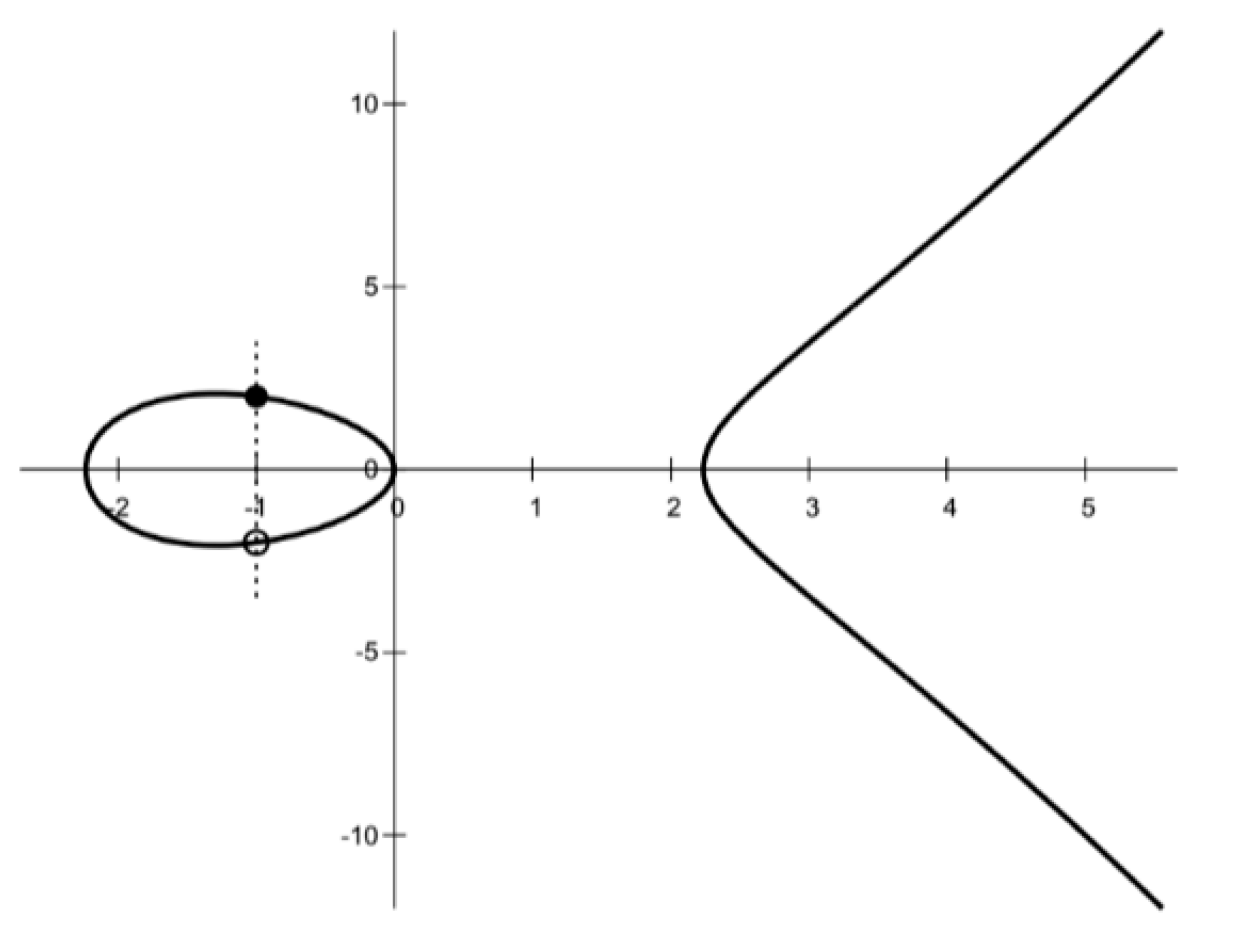
3.2. Hyperelliptic Curve Cryptography for Genus ≥ 2
- the is singular
- the divides precisely the polynomial
4. Proposed Approach
4.1. Tools & Software
4.2. Implementation of Cryptographic Techniques
4.3. Simulation of Road Traffic
4.4. Implementation of VANET Communication
4.5. Implementation of Energy Consumption Model
5. Experimental Evaluation
5.1. Duration of Cryptographic Operations
- Key-pair generation
- Certificate public key extraction
- Message decryption
- Message encryption
- Signature generation
- Signature verification
- Decoding
- Certificate private key reception
- Certificate generation
- Encoding
5.2. Size of Exchanged Messages
- RSU_CERT_BROADCAST: The certificate that RSU transmits periodically.
- VEHICLE_SEND_JOIN_RSU: The message “Join” that the vehicle sends to the RSU, when it needs to subscribe to the RSU’s area.
- RSU_ACCEPT: The RSU’s response to the vehicle’s message “join”. It also contains the cryptographic symmetric key.
- RSU_INFORM_LEADER: The message that RSU sends, in order to update a vehicle that a Group Leader was chosen. It brings the Proof of Leadership.
- GL_LEADERSHIP_PROOF: The message that GL (Group Leader) broadcasts periodically, in order to prove that it is valid and invite the vehicles to “join” him.
- VEHICLE_SEND_JOIN_GL: The message “Join” that the vehicle sends to the GL, when it needs to subscribe to the respective GL.
- GL_ACCEPT: The GL’s response to the vehicle’s message “join”, also carrying the cryptographic symmetric key.
- VEHICLE_INFORM: The message that a vehicle sends in order to update for its position. It was chosen typically as an updating message for the system evaluation.
5.3. Energy Consumption
- RECEIVE_CERT: It just describes the procedure of receiving and the processing of the certificate of the RSU (process of very small-time duration).
- EXTRACT_GL_PROOF: It describes the procedure of receiving and processing of the GL leader’s proof (process of very small-time duration).
- RECEIVE_ACCEPT_SYMMETRIC: It describes the procedure of sending the message “Join” and receiving and processing of the “Accept” reception from the RSU.
- EXTRACT_JOIN_SEND_ACCEPT: It describes the procedure of the “Join” message that GL received from a vehicle and the transmission of the “Accept” response.
- EXTRACT_INFO_GL: It describes the procedure of extracting a message “Inform” that GL receives from a vehicle.
6. A Device for Message Encryption via Zigbee Network, Using AES or ECC
6.1. AES Cryptographic Protocol
- AES scheme is a block cipher that makes use of the same key either for encryption or decryption period.
- The unencrypted text block size is 16-bytes (128-bits)
- The size of the key can be 128-bits, 192-bits or 256-bits
- AES contains iterations, best known as rounds, related to the key sizes. These are the following: i) 10 rounds for 128-bits key size, ii) 12 rounds for 192-bits size and iii) 14 rounds for 256-bits size.
- AES contains 4-levels: 1) SubByte, 2) ShiftRow, 3) MixColumn, 4) AddRoundKey. Those stages are taking place in a continuous logic and realized as rounds on a 4x4 bytes state array. The plaintext (the text to be encrypted) is fed in those rounds.
- The SubByte level is a byte substitution in a non-linear rationale, that is realized on every byte of the State array in an independent logic.
- The ShiftRow Stage consists of four rows. The initial row is unshifted, while the rest 3 rows are moved in a circular logic over 1 to 3 bytes.
- The MixColumns Stage makes use of the column-by-column for working the state. Every column is used as a polynomial consisting of four-terms in a GF(28). Then, undergoes a multiplication with a fixed a(x) modulo x4+1 polynomial.
- The AddRoundKey part operates the States via the use of one of the sub-keys by realizing XOR computation. The latter is implemented between every byte of the sub-key and every byte of the State.
6.2. Presentation of the Message Encryption/Decryption Device
- LCD Type: TFT
- LCD Interface: SPI
- LCD Controller: ILI9486
- Touch Screen Type: Resistive
- Touch Screen Controller: XPT2046
- Colors: RGB, 65K colors
- Resolution: 480x320 (Pixel)
- Aspect Ratio: 8:5
- I/O Voltage: 3.3 - 5V
7. Conclusions and Plans for the Future
Author Contributions
Funding
Data Availability Statement
Conflicts of Interest
References
- Azees, M.; Vijayakumar, P.; Deboarh, L.J. EAAP: Efficient anonymous authentication with conditional privacy-preserving scheme for vehicular ad hoc networks. IEEE Trans. Intell. Transp. Syst. 2017, 18, 2467–2476. [Google Scholar] [CrossRef]
- Liu, Y.; Wang, Y.; Chang, G. Efficient privacy-preserving dual authentication and key agreement scheme for secure V2V communications in an IoV paradigm. IEEE Trans. Intell. Transp. Syst. 2017, 18, 2740–2749. [Google Scholar] [CrossRef]
- Jo, H.J.; Kim, I.S.; Lee, D.H. Reliable cooperative authentication for vehicular networks. IEEE Trans. Intell. Transp. Syst. 2017, 19, 1065–1079. [Google Scholar] [CrossRef]
- Mistareehi, H.; Islam, T.; Manivannan, D. A secure and distributed architecture for vehicular cloud. Internet Things 2021, 13, 100355. [Google Scholar] [CrossRef]
- Baee, M.A.R.; Simpson, L.; Boyen, X.; Foo, E.; Pieprzyk, J. ALI: Anonymous lightweight inter-vehicle broadcast authentication with encryption. IEEE Trans. Dependable Secur. Comput. 2022. [Google Scholar]
- Dua, A.; Kumar, N.; Das, A.K.; Susilo, W. Secure message communication protocol among vehicles in smart city. IEEE Trans. Veh. Technol. 2017; 67, 4359–4373. [Google Scholar]
- Mistareehi, H.; Manivannan, D. A low-overhead message authentication and secure message dissemination scheme for vanets. Network 2022, 2, 139–152. [Google Scholar] [CrossRef]
- Scheidler, R. An introduction to hyperelliptic curve arithmetic. 2015. [Google Scholar]
- Alimoradi, R. A study of hyperelliptic curves in cryptography. Int. J. Comput. Netw. Inf. Secur. 2016, 8, 67. [Google Scholar] [CrossRef]
- Bh, P.; Chandravathi, D.; Roja, P.P. Encoding and decoding of a message in the implementation of Elliptic Curve cryptography using Koblitz’s method. Int. J. Comput. Sci. Eng. 2010, 2, 1904–1907. [Google Scholar]
- Campagna, M. SEC 4: Elliptic curve Qu-Vanstone implicit certificate scheme (ECQV). Standards for Efficient Cryptography, Version, 1. 2013. [Google Scholar]
- Handbook of elliptic and hyperelliptic curve cryptography. Cohen, H.; Frey, G.; Avanzi, R.; Doche, C.; Lange, T.; Nguyen, K. and Vercauteren, F. (Eds.) CRC press: Boca Raton, FL, USA, 2005. [Google Scholar]
- Gaudry, P.; Schost, É. Construction of secure random curves of genus 2 over prime fields. In Advances in Cryptology-EUROCRYPT 2004: International Conference on the Theory and Applications of Cryptographic Techniques, Interlaken, Switzerland, 2-6 May 2004; Proceedings 23 (pp. 239-256); Springer: Berlin/Heidelberg, Germany, 2 May 2004. [Google Scholar]
- Seck, M.; Diarra, N. Unified Formulas for Some Deterministic Almost-Injective Encodings into Hyperelliptic Curves. Progress in Cryptology–AFRICACRYPT 2018: 10th International Conference on Cryptology in Africa, Marrakesh, Morocco, 7–9 May 2018; Proceedings 10 (pp. 183-202). Springer International Publishing: Berlin/Heidelberg, Germany, 7 May 2018. [Google Scholar]
- Weng, A. A class of hyperelliptic CM-curves of genus three. J. -Ramanujan Math. Soc. 2001, 16, 339–372. [Google Scholar]
- Hammod, D.N. June. Modified Lightweight AES based on Replacement Table and Chaotic System. In 2022 International Congress on Human-Computer Interaction, Optimization and Robotic Applications (HORA) (pp. 1-5). IEEE; 2022. [Google Scholar]
- Pelzl, J.; Wollinger, T.; Paar, C. Special hyperelliptic curve cryptosystems of genus two: Efficient arithmetic and fast implementation. Embedded Cryptographic Hardware: Design and Security. 2004. [Google Scholar]
- Pelzl, J.; Wollinger, T.; Guajardo, J.; Paar, C. Hyperelliptic curve cryptosystems: Closing the performance gap to elliptic curves (update). Cryptology ePrint Archive. 2003. [Google Scholar]
| 1 | |
| 2 | |
| 3 | |
| 4 | |
| 5 | |
| 6 | |
| 7 | |
| 8 | |
| 9 | |
| 10 | |
| 11 | |
| 12 | |
| 13 | |
| 14 |

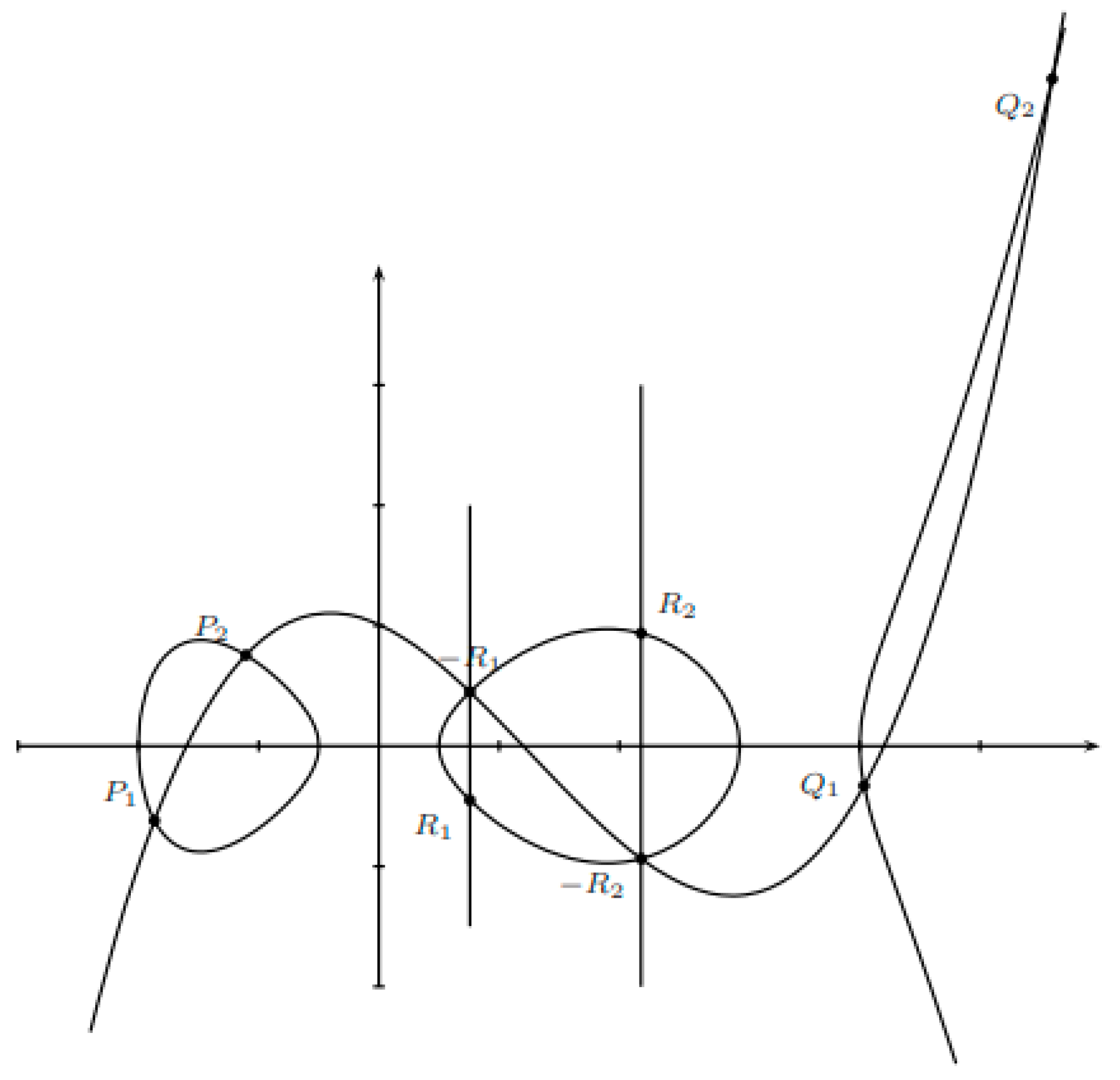

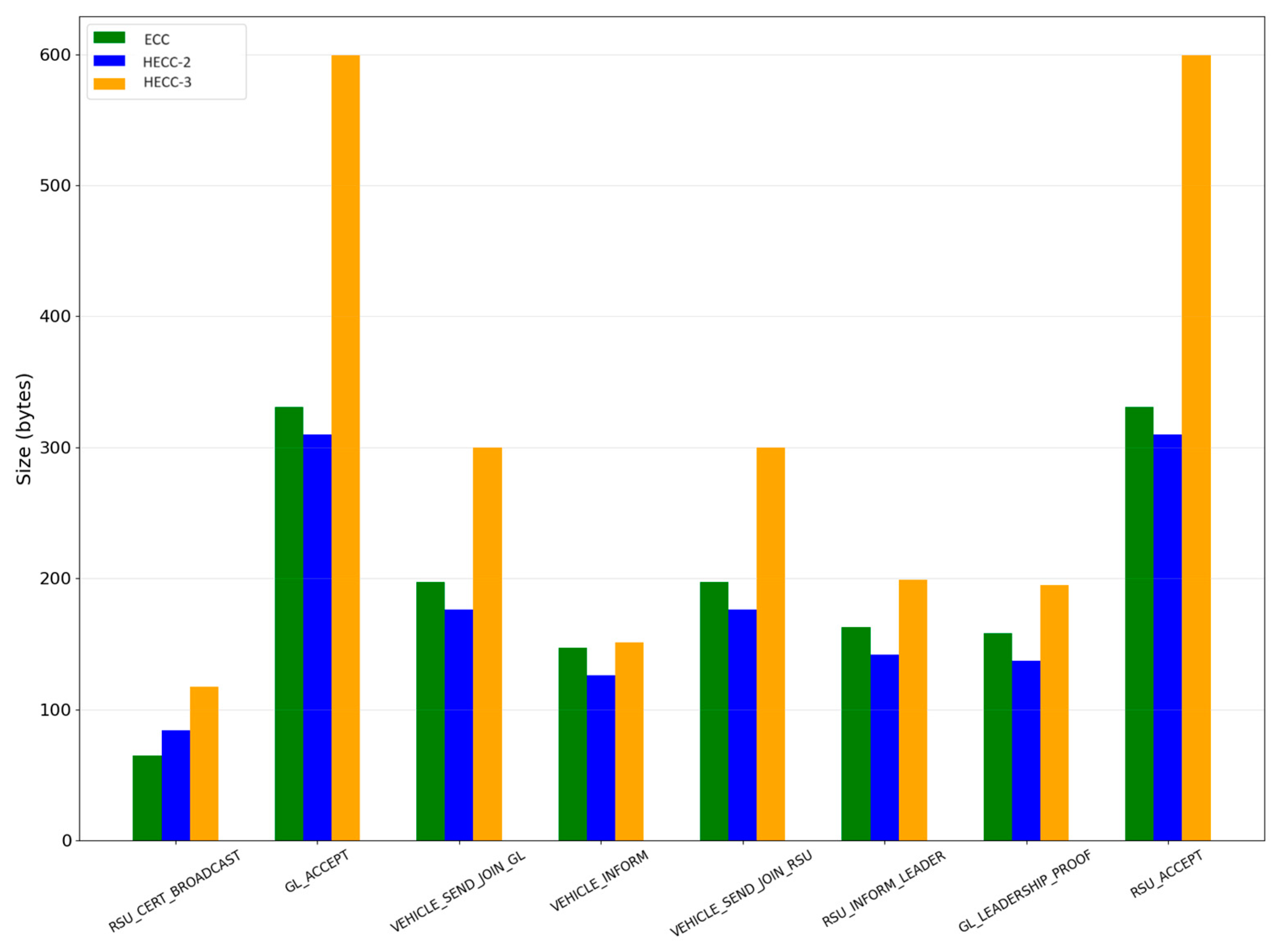
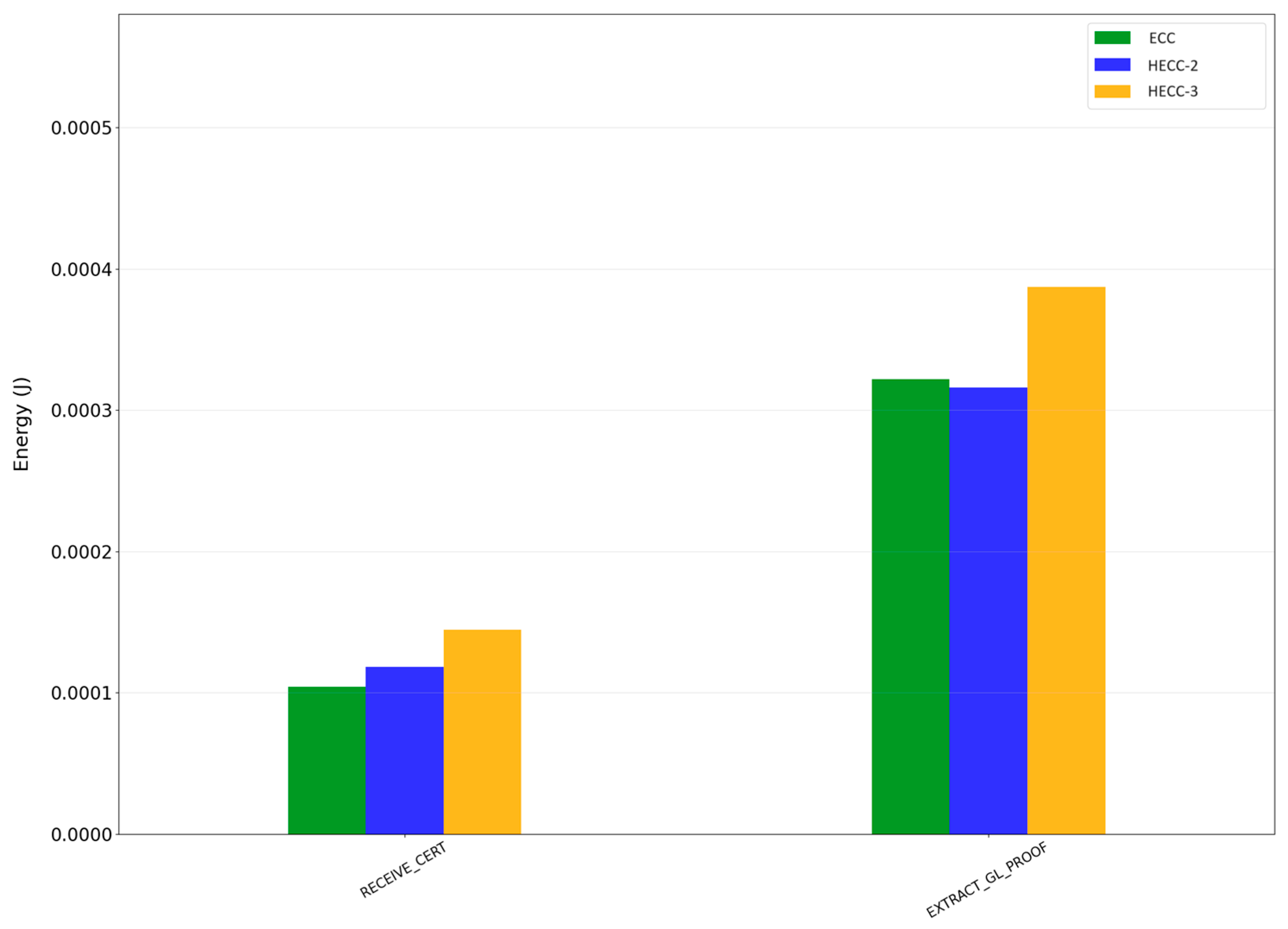





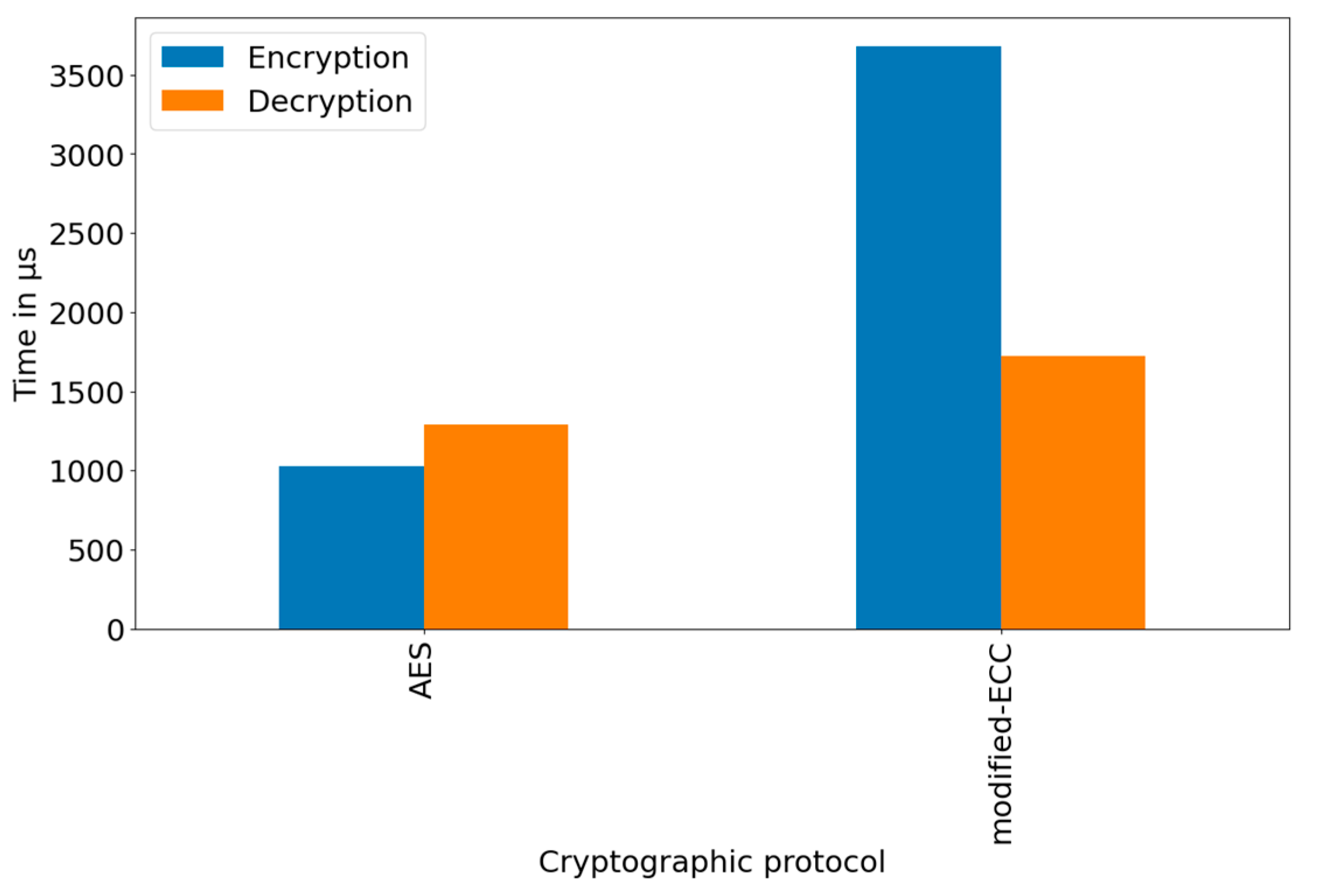



Disclaimer/Publisher’s Note: The statements, opinions and data contained in all publications are solely those of the individual author(s) and contributor(s) and not of MDPI and/or the editor(s). MDPI and/or the editor(s) disclaim responsibility for any injury to people or property resulting from any ideas, methods, instructions or products referred to in the content. |
© 2024 by the authors. Licensee MDPI, Basel, Switzerland. This article is an open access article distributed under the terms and conditions of the Creative Commons Attribution (CC BY) license (https://creativecommons.org/licenses/by/4.0/).




